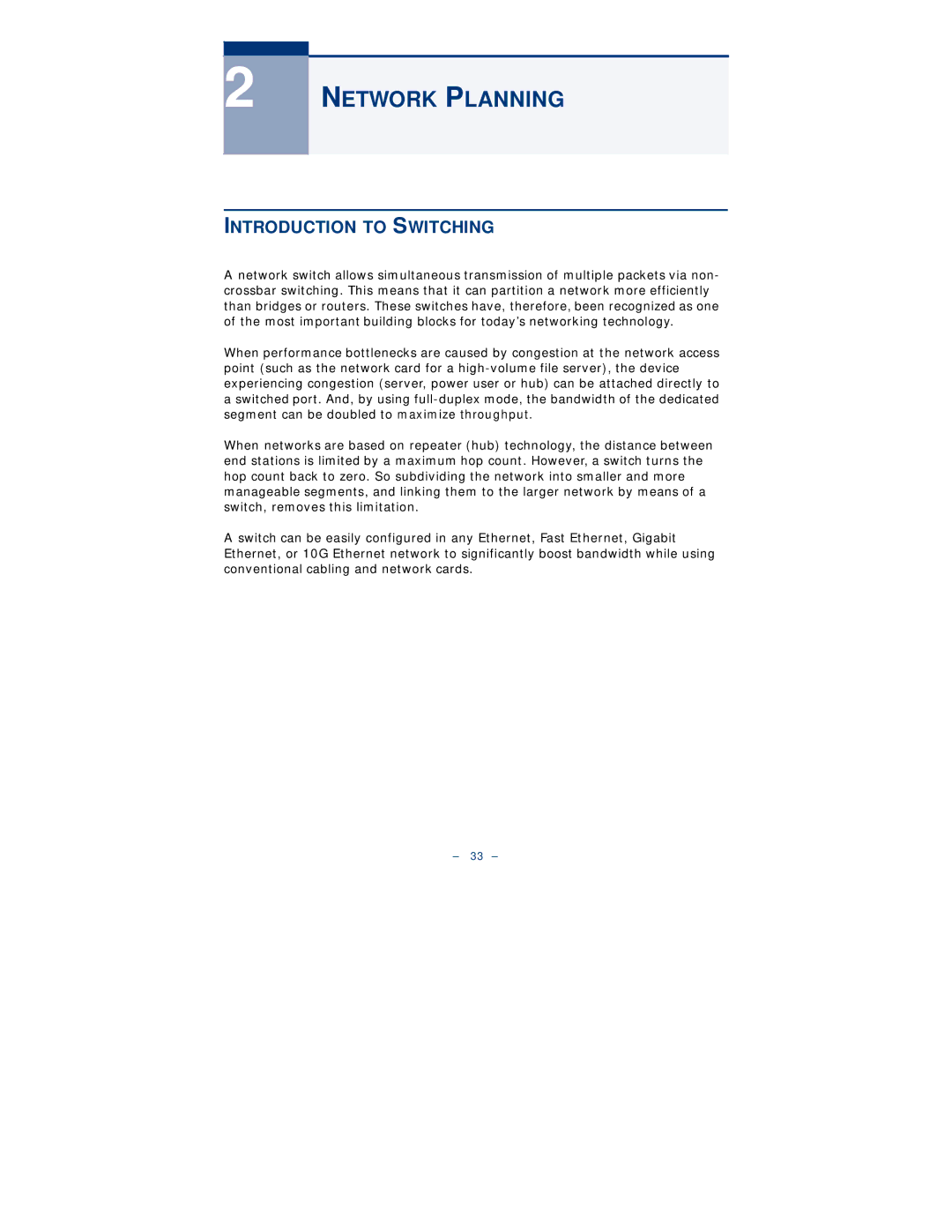
2
NETWORK PLANNING
INTRODUCTION TO SWITCHING
Anetwork switch allows simultaneous transmission of multiple packets via non- crossbar switching. This means that it can partition a network more efficiently than bridges or routers. These switches have, therefore, been recognized as one of the most important building blocks for today’s networking technology.
When performance bottlenecks are caused by congestion at the network access point (such as the network card for a
When networks are based on repeater (hub) technology, the distance between end stations is limited by a maximum hop count. However, a switch turns the hop count back to zero. So subdividing the network into smaller and more manageable segments, and linking them to the larger network by means of a switch, removes this limitation.
Aswitch can be easily configured in any Ethernet, Fast Ethernet, Gigabit Ethernet, or 10G Ethernet network to significantly boost bandwidth while using conventional cabling and network cards.
– 33 –
